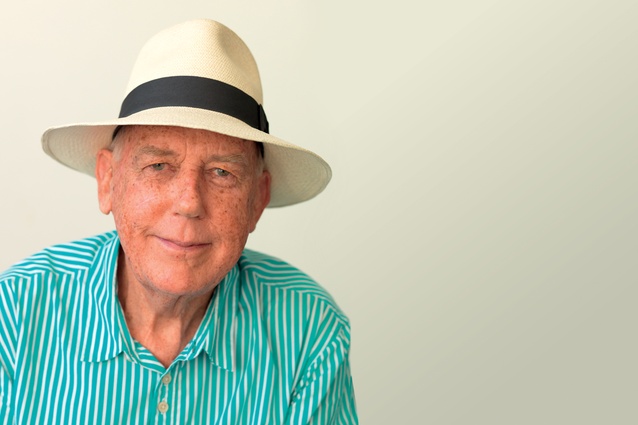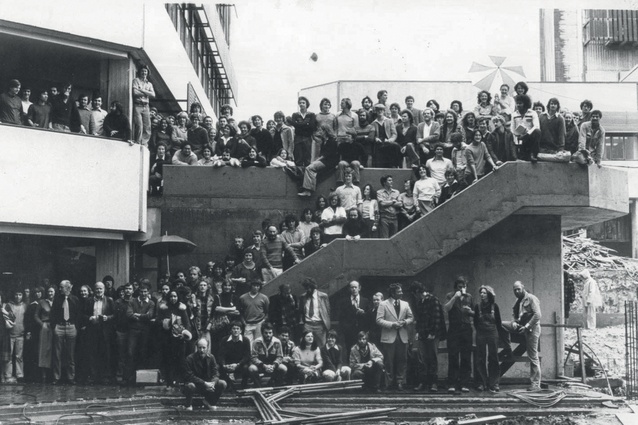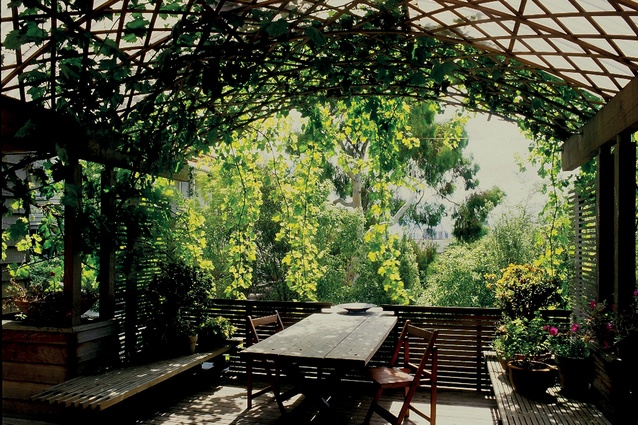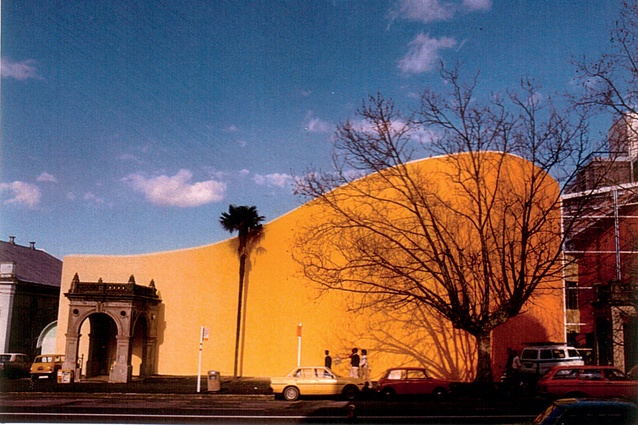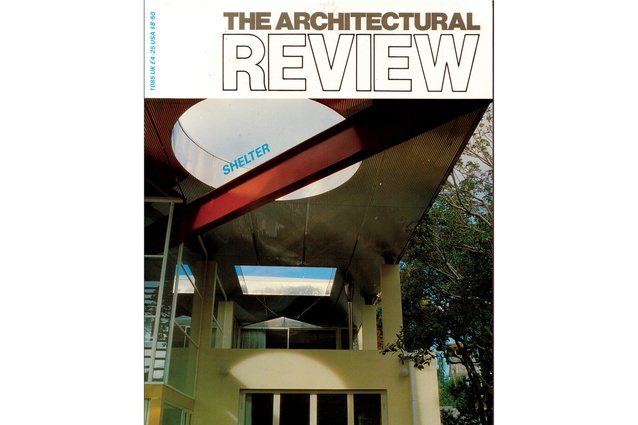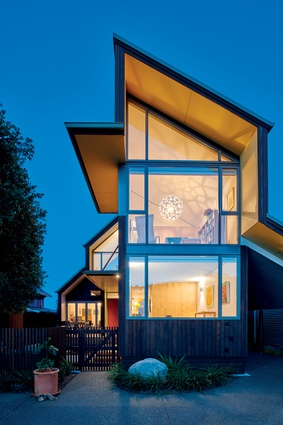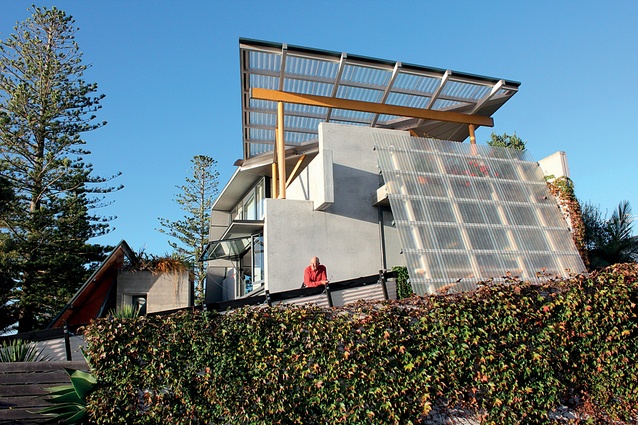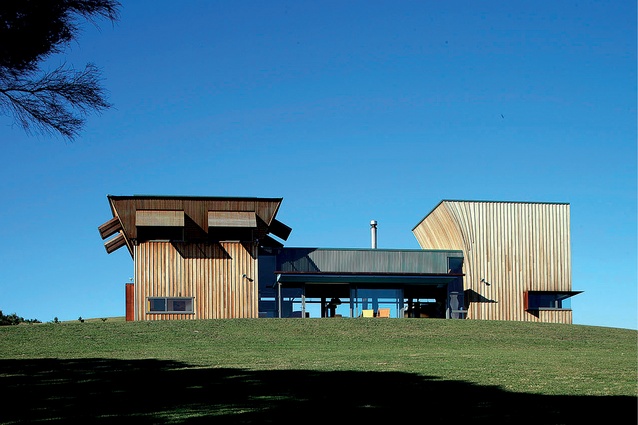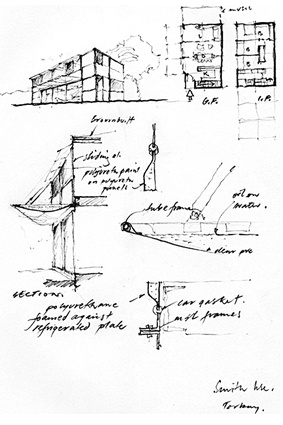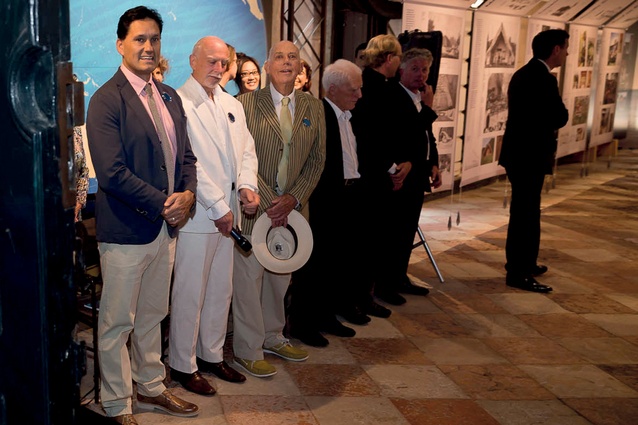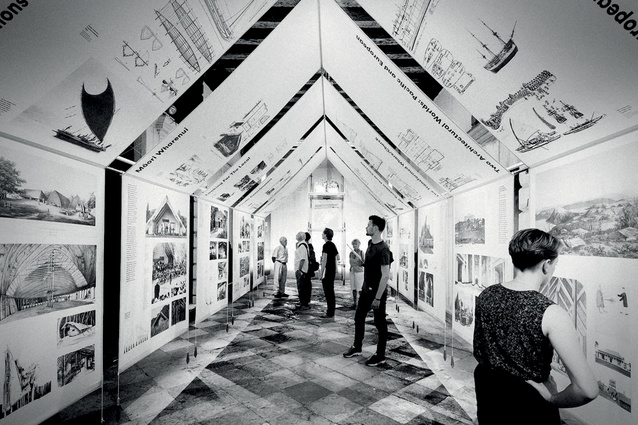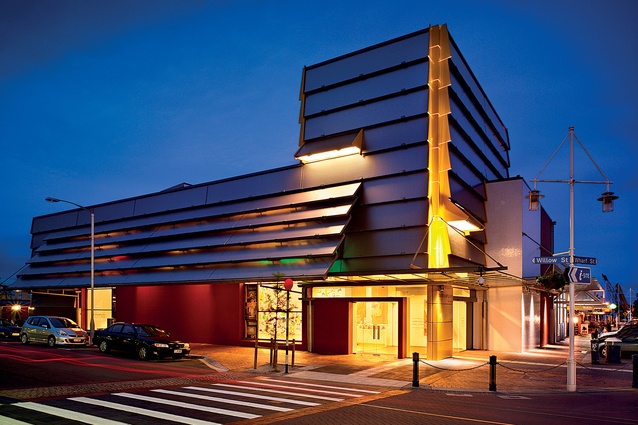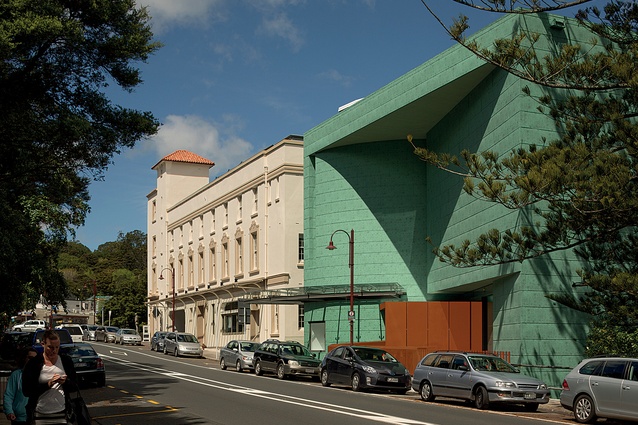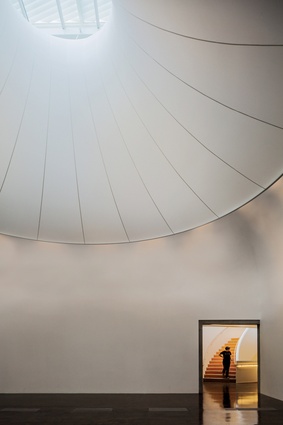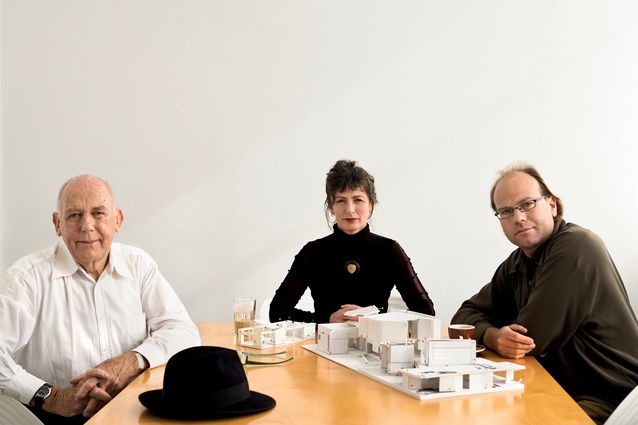Remembering David Mitchell
In a special tribute, Tony van Raat remembers the greatly admired New Zealand architect and NZIA Gold Medallist David Mitchell, with memories shared by Mike Austin, Lindley Naismith, Marshall Cook, Pip Cheshire, Pete Bossley and Malcolm Walker.
There can be nobody involved in the world of architecture in this country who would not have heard of the death of David Mitchell earlier this year. We lost him on 26 April after a long and, what looked from the outside like, completely fulfilled life of 77 years. In his time – long but much too short – David made a massive impact on Aotearoa/New Zealand, on the wider world, on architecture and on the thousands of people who remember him with affection and, often, a certain awe that one person could have achieved so much and achieved it so well.
The task of memorialising David is one that will reveal itself over time as a work of many people. There are a thousand stories to be told about him and most of them are amusing for the vitality, irreverence and good humour which infused everything he did. In this brief tribute, it seems appropriate to set out some reminiscences of David Mitchell from a very small selection of those who knew him.
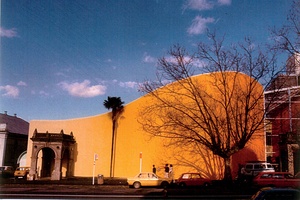
As Lytton Strachey remarked about the Victorian age, there is an ocean of material, far too much to be covered; but one can, perhaps, row out over it and lower a bucket, and then examine what is found in that small, but hopefully not untypical, sample. It is certainly true that, in the life of David Mitchell – architect, musician, teacher, sailor, writer, friend and lover – the whole was greater than the sum of its parts. But the parts themselves were so impressive. Some of them are remembered here.
Mike Austin: David and I were complicated friends – regularly working together but maybe mutually envious. I was in awe of his courage and outspokenness in so many spheres. For example: while I grew up in Auckland with the privileges of yachting, he and his partner, Julie Stout, sailed off around the world; while I admired and wrote about his Freemans Bay house, he and Julie, while living in it, made an offer to buy my Chapple house.
While in architecture school, he and I proposed another way of running a studio, which management diverted into the so-called pilot school in an isolated brick building. The success of the Brick students was ascribed to issues such as better light in the studio we occupied. David flashed back: “Swap you.”
We exchanged studios the following year and no more was heard about lack of light. When students insisted we performed at one Brick event, I read McGonagall’s poem The Tay Bridge Disaster while David accompanied on his fiddle. We thought it was funny but they all probably wondered.
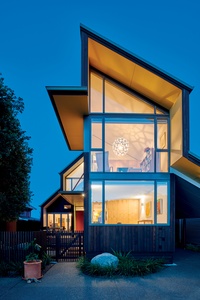
When David was diagnosed with prostate cancer, he wrote to me, “I’m not dead yet!” Now that he is, I still can’t believe it.
Lindley Naismith: I remember Dave’s deep respect for skilful planning (he would reference Aalto, Le Corbusier, Marshall Cook…) and his withering put-down of a design failure as having a ‘flabby plan’ – ill-considered, inefficient, inelegant. The term echoes in my brain whenever I’m working on a plan – or critiquing others. He used to say that, in designing a building, “one of the hardest things to do is to place a window in a wall”.
I recall him saying that, when travelling, the best preparation for the day is “a full stomach and an empty bowel”. His travelling, like everything else he did, was intense. Dave loved rugby – especially All Blacks’ games. This wasn’t a passion shared by Julie but it was a real bond with others, which meant they would often come to our place to watch the big games on TV together. He adored the Joe Cocker song, You Can Leave Your Hat On. So right.
Marshall Cook: David Mitchell made us look at New Zealand architecture in a new way. He bypassed colonial precedents and aimed at the innocent beauty of simple, utilitarian buildings. He reworked the humble and idiosyncratic, and infused his buildings with the joy of surprise encounter.
Colour, light and texture, both confrontational and reassuring, were the hallmarks of his work. He was a master planner who used the elements of the building – entrances, stairs, structure, etc. – to enhance the experience.
As a teacher, he inspired curiosity in his students while also creating lifetime friendships. In both architecture and life, he was an adventurous risk-taker who infected all he touched with compassion and warmth.
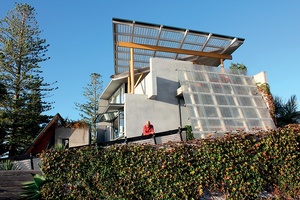
Pip Cheshire: Asked on camera about our fledgling practice of three unregistered architecture graduates, David replied, “These chaps want to be officers without going to Sandhurst”. It was a great Mitchell line that adroitly combined a critique of registration, a process he went on to describe as “a constraint on the able and a prop for the disabled”, and of our ambitions to foot it in the architectural world.
Its casual critique of institution and aspiration, delivered with wry humour and an economy of words, was the basis of his success as a teacher and studio critic. Those of us fortunate (enough) to have benefited from his tuition, and those who have enjoyed his friendship since graduation, will be forever enriched by the humour, humanity, intellect and down-home good sense that David brought to his review of our labours.
Pete Bossley: I sit here with a golden oldie in front of me: a plastic-covered lever arch folder of the University of Auckland’s School of Architecture course, Environmental Control 1, from 1975. There are probably not many of these left in the world.
It has followed me from office to office for the last 43 years, not because I have referred to it incessantly but because it has always lifted my spirits just to see the red and white spine in the shelves and to be reminded of the teacher, David Mitchell, and the enthusiasm he instilled.
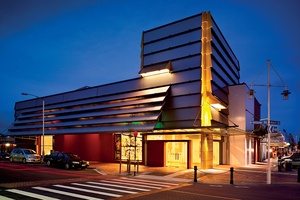
He was renowned as a designer, with twinkling eyes and balding head, dressed in a corduroy suit with tennis shoes, cravat or flowing scarf, colourful and energetic, who taught us thermal control, massive versus light buildings, service systems, climatic influences, heat transfer and air movement, lighting, acoustics and more – with flair and enthusiasm. He made what could have been dry and dull subjects fascinating and enjoyable.
He had inherited the earnestly typed cyclostyled textbook from others, then proceeded to insert pages of his inimitable freehand sketches and longhand notes into and across the existing typed pages, illustrating with jaunty diagrams and otherwise impenetrable charts and graphs. He made it simple, straightforward, legible.
My old folder is not much but, now, it has become an even more precious keepsake.
Malcolm Walker: Dave was a perceptive commentator who understood the ordinary. A lecture he gave on the joys of Barrys Point Road was an eye-opener for me as a young student because it emphasised that architecture is everywhere. Dave wasn’t afraid of anyone and I remember him calling out Serge Chermayeff, the prominent Russian-born British architect and writer, as a “crusty old tyrant” during a public talk. Chermayeff’s response was not recorded.
Dave ran a great column in the AAA news-sheet called Hedgehopping, an acerbic and very funny rundown on who was doing what to whom (architecturally) around town. It was eventually closed down, probably by those on the receiving end… and that voice!
Tony van Raat: My own memories of David Mitchell are rich, although I knew him only from his middle age. It didn’t take any time at all to recognise that he was a humanist who valued people and operated in a dogma-free zone. The fact that he took great pleasure in people meant that, inevitably, he gave it too.
I recall that, as a young architect, before I ever met David, I was terribly impressed by the University of Auckland School of Music, which he designed with Jack Manning. So impressed was I that I sort-of copied various elements from it in a design of my own – the result was not nearly as successful as his was, of course. But that was only one of a long list of his buildings that I, and many others, valued.
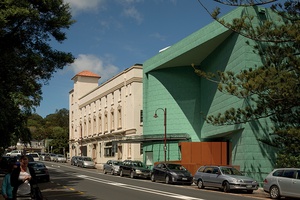
Happily, I pass Te Uru, that architectural ornament of Titirangi Village, every day – and never without thinking, “That’s David and Julie’s building…” But David Mitchell’s work in architecture was not limited just to buildings. He wrote extensively and those of us who had the pleasure of working with his team when he was our first Creative Director at the Venice Architecture Biennale in 2014 saw in that project a treatise on buildings in Aotearoa/New Zealand. No one could have introduced us to the world better.
David is gone but much remains, including a lot of architecture. It may seem strange that a memorial such as this does not list the highlights of David’s professional output: all of it good and much of it remarkable. Certainly, a book is waiting to be written about the work of David Mitchell, the architect. The pity is that, although he will be the subject, David, with his witty, acute and perceptive writing style, won’t be the author as he was of the still invaluable book, The Elegant Shed.
So what is David Mitchell’s real legacy? Is it the buildings? Is it the students he taught, many of whom are still his protégés? Is it the rich life he had with family and friends? Or is it simply the example of someone memorably expansive, inclusive, grounded in reality, resistant to complacency and capable of eclectic innovation, who faced every situation with infectious enthusiasm? Take your pick, for each of these aspects of a life lived to overflowing is worth recalling with gratitude and with love.

